Advertisements
Advertisements
प्रश्न
In the following figure, point D divides AB in the ratio 3 : 5. Find :
BC = 4.8 cm, find the length of DE.
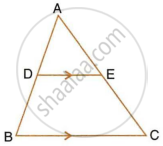
उत्तर
Given that `(AD)/(DB) = 3/5`
So, `(AD)/(AB) = 3/8`
In ΔADE and ΔABC,
∠ADE = ∠ABC ...(Since DE || BC, so the angles are corresponding angles)
∠A = ∠A ...(Common angle)
∴ ΔADE ∼ ΔABC ...(AA criterion for similarity)
`=> (AD)/(AB) = (DE)/(BC)`
`=> 3/8 = (DE)/(4.8)`
`=>` DE = 1.8 cm
APPEARS IN
संबंधित प्रश्न
In figure, ∆ACB ~ ∆APQ. If BC = 8 cm, PQ = 4 cm, BA = 6.5 cm, AP = 2.8 cm, find CA and AQ.
In the given figure, ∠ABC = 90° and BD⊥AC. If BD = 8cm, AD = 4cm, find CD.
In the given figure, DB⊥BC, DE⊥AB and AC⊥BC.
Prove that `(BE)/(DE)=(AC)/(BC)`
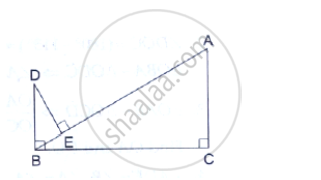
Δ ABC ∼ Δ PQR. AD and PS are altitudes from A and P on sides BC and QR respectively. If AD : PS = 4 : 9 , find the ratio of the areas of Δ ABC and Δ PQR.
The given figure shows a parallelogram ABCD. E is a point in AD and CE produced meets BA produced at point F. If AE = 4 cm, AF = 8 cm and AB = 12 cm, find the perimeter of the parallelogram ABCD.
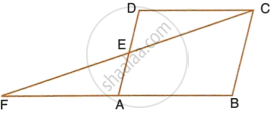
Given is a triangle with sides 3 cm, 5 cm and 6 cm. Find the sides of a triangle which is similar to the given triangle and its shortest side is 4.5 cm.
In the given figure, ∠ACB = ∠CDA, AC = 8cm, AD = 3cm, then BD is ______.
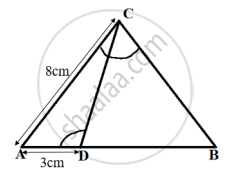
Is the following statement true? Why? “Two quadrilaterals are similar, if their corresponding angles are equal”.
In figure, if PQRS is a parallelogram and AB || PS, then prove that OC || SR.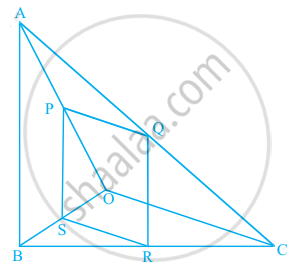
Prove that if a line is drawn parallel to one side of a triangle intersecting the other two sides in distinct points, then the other two sides are divided in the same ratio.
Using the above theorem prove that a line through the point of intersection of the diagonals and parallel to the base of the trapezium divides the non-parallel sides in the same ratio.
